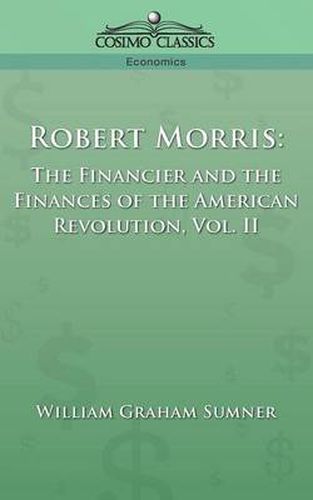Readings Newsletter
Become a Readings Member to make your shopping experience even easier.
Sign in or sign up for free!
You’re not far away from qualifying for FREE standard shipping within Australia
You’ve qualified for FREE standard shipping within Australia
The cart is loading…






This title is printed to order. This book may have been self-published. If so, we cannot guarantee the quality of the content. In the main most books will have gone through the editing process however some may not. We therefore suggest that you be aware of this before ordering this book. If in doubt check either the author or publisher’s details as we are unable to accept any returns unless they are faulty. Please contact us if you have any questions.
Robert Morris’ tombstone states that he was The Financier ; officially, however, he was Superintendent of Finance. Whatever his title, Robert Morris played an integral role in financing the American Revolution, and Yale Professor William G. Sumner examines Morris’ life and actions to enhance our understanding of the finances of the young nation.In Volume II of a two-volume work, Sumner begins with the events of 1781, when Morris anticipated receiving loans from Spain. From there, Sumner looks at Morris’ attempts to secure loans from other nations, his unpopularity and resignation, and the organization of the treasury. Sumner also covers the Bank War of 1785-1786, the Commercial Convention and the Constitutional Convention, Morris’ career in the U.S. Senate, and his social standing and business dealings. What should be noted is that while Morris helped to finance the Revolution, he spent three years in prison for personal debts. WILLIAM GRAHAM SUMNER was a professor of political and social science at Yale University and became known as a Social Darwinist and advocate of the laissez faire principle in economics. Besides writing a number of books on sociology, history, and economics, he was also influential in the movement to modernize the American university system.
$9.00 standard shipping within Australia
FREE standard shipping within Australia for orders over $100.00
Express & International shipping calculated at checkout
This title is printed to order. This book may have been self-published. If so, we cannot guarantee the quality of the content. In the main most books will have gone through the editing process however some may not. We therefore suggest that you be aware of this before ordering this book. If in doubt check either the author or publisher’s details as we are unable to accept any returns unless they are faulty. Please contact us if you have any questions.
Robert Morris’ tombstone states that he was The Financier ; officially, however, he was Superintendent of Finance. Whatever his title, Robert Morris played an integral role in financing the American Revolution, and Yale Professor William G. Sumner examines Morris’ life and actions to enhance our understanding of the finances of the young nation.In Volume II of a two-volume work, Sumner begins with the events of 1781, when Morris anticipated receiving loans from Spain. From there, Sumner looks at Morris’ attempts to secure loans from other nations, his unpopularity and resignation, and the organization of the treasury. Sumner also covers the Bank War of 1785-1786, the Commercial Convention and the Constitutional Convention, Morris’ career in the U.S. Senate, and his social standing and business dealings. What should be noted is that while Morris helped to finance the Revolution, he spent three years in prison for personal debts. WILLIAM GRAHAM SUMNER was a professor of political and social science at Yale University and became known as a Social Darwinist and advocate of the laissez faire principle in economics. Besides writing a number of books on sociology, history, and economics, he was also influential in the movement to modernize the American university system.